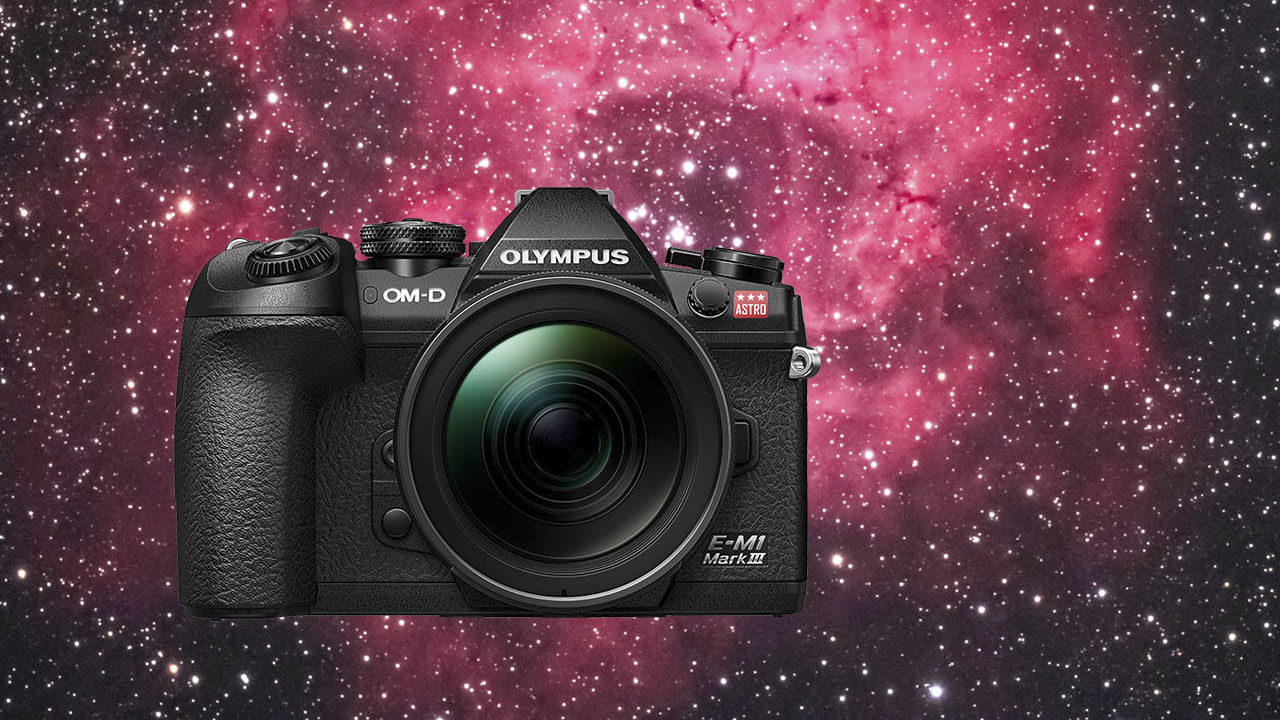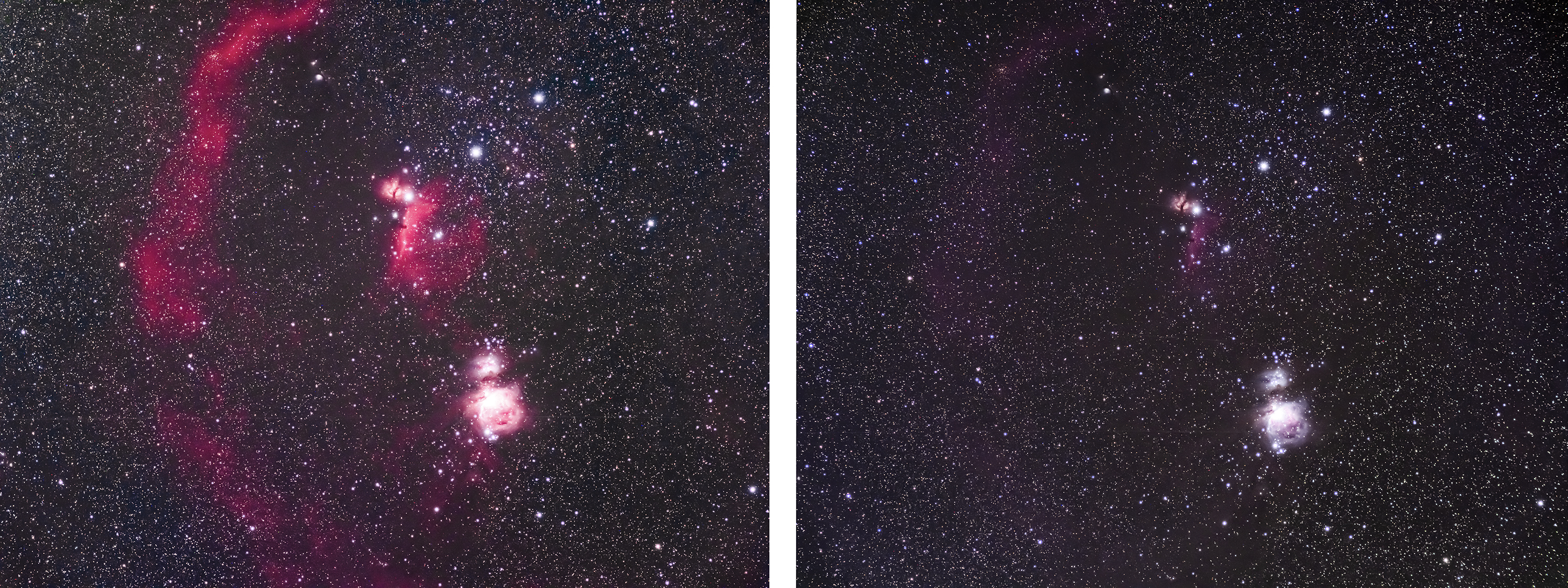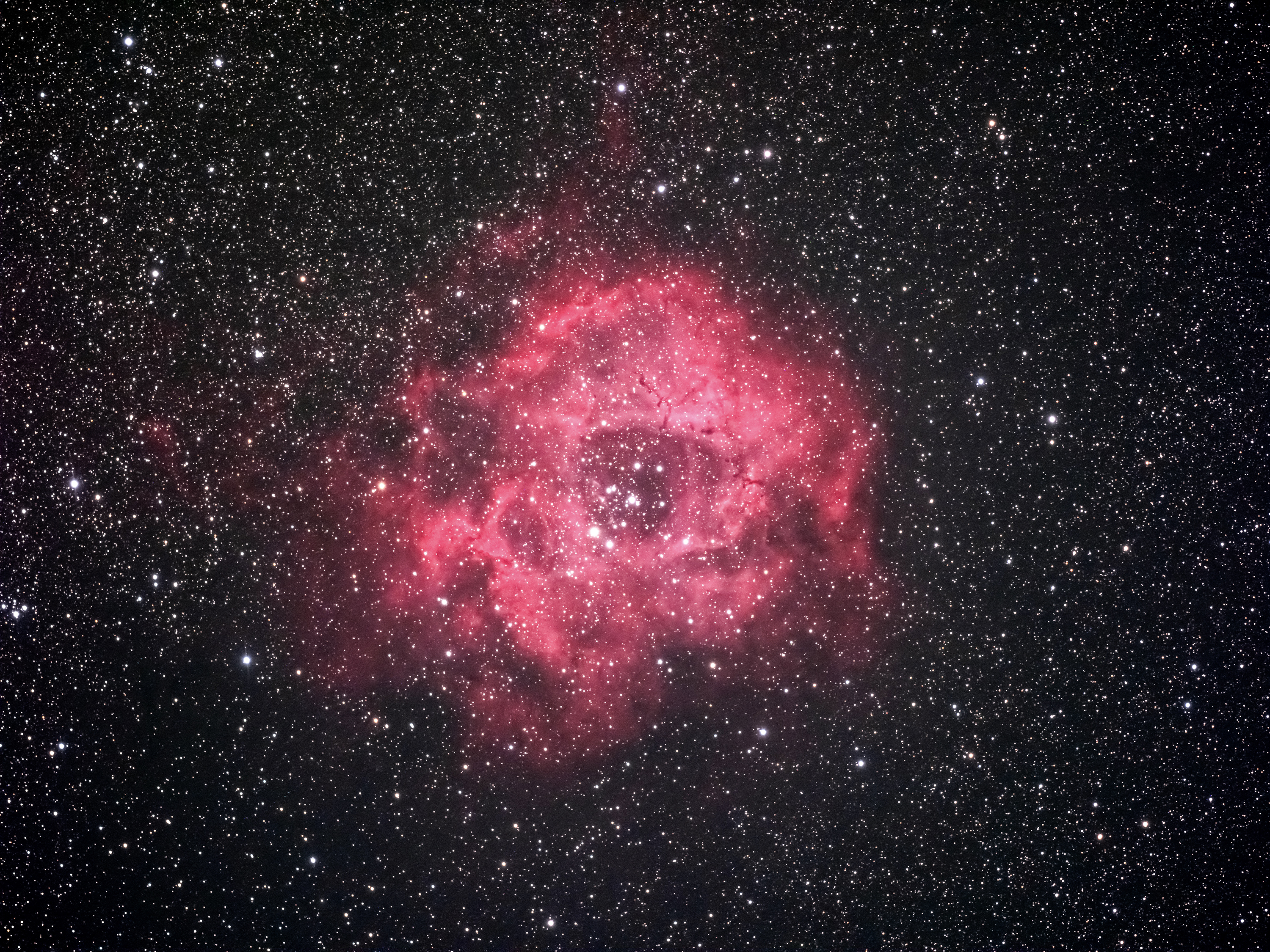OM System just launched a powerful astrophotography camera that can reveal the stunning colors of nebulae, and it doesn't cost the earth
The E-M1 Mark III Astro and twin filter kit could delight astrophotography fans

- OM System just launched a niche E-M1 Mark III with IR-cut filter in front of the sensor
- Fine-tuned to pass through 100% of the Hα rays vital to astrophotography
- Two astrophotography filters for current OM System cameras were also revealed
If astrophotography is your thing, then OM System just launched the camera for you – the E-M1 Mark III Astro. It's based on the same design and equipped with the same features as the five year old E-M1 Mark III but with one crucial difference – it has an IR-cut filter in front of its sensor that's fine tuned to pass through 100% of the Hα rays.
With such a setup, vibrant colors of distant nebulae are revealed, colors that are otherwise invisible to the human eye. I've included side-by-side photos supplied by OM System of the same nebula taken with the new E-M1 Mark III Astro and a regular E-M1 Mark III to illustrate the difference one little filter can make (see below), plus other stunning images taken with the new camera by IIJIMA Yutaka.

In addition to the E-M1 Mark III Astro, OM System has also announced two filters: the Body Mount Light Pollution Suppression filter (BMF-LPC01) and Body Mount Soft Filter (BMF-SE01), which are available separately, or as a kit included with the new camera.
The filters are designed to be placed inside any one of OM System's recent cameras, such as the OM-1 Mark II and OM-3, between the lens mount and sensor, which means you can swap lenses while the filter remains in place.
The light pollution suppression filter cuts light bleed from artificial sources, such as street and city lights (a bane to astrophotography) resulting in more vivid night shots. Meanwhile, the soft filter blurs and highlights point light sources (stars), emphasizing their colors to make them stand out.
Available now from OM System's website only in the UK, the E-M1 Mark III Astro with those two filters costs £1,899, while the light pollution filter and soft filter are available separately for £259 and £179 respectively. In Australia, Camera House has stock of the OM System E-M1 Mark II Astro Kit for AU$3,199 (US price TBC).
A sky full of stars
OM System cameras are a compelling choice for astrophotography thanks to several computational modes that boost the quality of their night shots. These include 'starry sky autofocus', which should ensure you acquire sharp focus, and 'handheld high-res shot' which boosts 20MP stills to 50MP (with the diurnal motion of the stars corrected if the camera is mounted to a tripod or equatorial mount). In addition, you can also photograph live composite for star trails.
Sign up for breaking news, reviews, opinion, top tech deals, and more.
And if you want to go one step further, the E-M1 Mark III Astro is now a top pick. It's a bit of one-trick pony however; if you used it for photography other than astro, there will be a reddish / pink color cast to your images. This can be somewhat corrected through white balance adjustments when editing, or by reversing the effect with a UV / IR hot-mirror filter on your lens at the time of capture.
An alternative to a purpose-made astrophotography camera is converting an existing camera, given the main difference is a particular type of IR-cut filter in front of the sensor. If you search online, there are a number of companies that offer this service, typically for anywhere between $350-600 / £300-500.
If you know that astrophotography is something you'd like to explore further, the new E-M1 Mark III Astro with filter kit is well worth looking into – it will create vivid astrophotography images simply not possible with a regular camera.

Follow TechRadar on Google News and add us as a preferred source to get our expert news, reviews, and opinion in your feeds. Make sure to click the Follow button!
And of course you can also follow TechRadar on TikTok for news, reviews, unboxings in video form, and get regular updates from us on WhatsApp too.
You might also like...
- Sigma reveals super-bright lens for astrophotography fans – plus a new world-first for pro sports shooters
- Missed the northern lights? Don't worry, scientists predict 50 years of intense activity – here's how to plan your next photo trip
- I spent a year with the $550 smart telescope that's shaking up the astrophotography world – and this is what it’s capable of

Tim is the Cameras editor at TechRadar. He has enjoyed more than 15 years in the photo video industry with most of those in the world of tech journalism. During his time as Deputy Technical Editor with Amateur Photographer, as a freelancer and consequently editor at Tech Radar, Tim has developed a deeply technical knowledge and practical experience with cameras, educating others through news, reviews and features. He’s also worked in video production for Studio 44 with clients including Canon, and volunteers his spare time to consult a non-profit, diverse stories team based in Nairobi. Tim is curious, a keen creative, avid footballer and runner, and moderate flat white drinker who has lived in Kenya and believes we have much to enjoy and learn from each other.
You must confirm your public display name before commenting
Please logout and then login again, you will then be prompted to enter your display name.